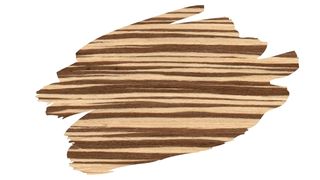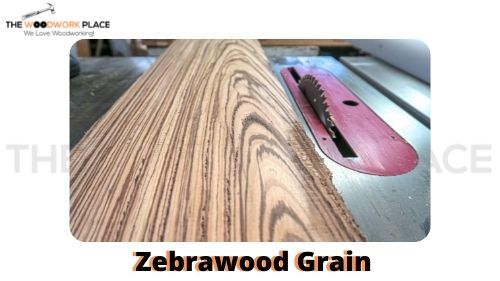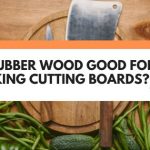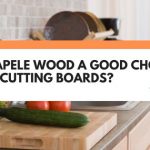You’ve come across some Zebrawood that’s caught your eye. Yet, you’re not sure if this tropical hardwood is right for your next cutting board.
Well, first off, it’s not surprising Zebrawood got your attention. This incredibly beautiful timber might cost a pretty penny, but it’s worth it just to give your next craft the aesthetic of this striped wood.
While it isn’t the hardest of tropical hardwoods, Zebrawood can be difficult to work with. And, if you aren’t too careful, it could even end up damaging your woodworking tools.
However, there’s no denying that the hard work is worth it, just for the look of that Zebrawood face grain. But, appearances aren’t everything…especially when it comes to cutting boards.
Your cutting board not only needs to look great, it needs to be food safe too. And not all types of timber can be trusted in the kitchen.
So, in this post, you will discover why you need to avoid making cutting boards from very hard lumber. You will also learn why that Zebrawood chopping block may not be the food-safe surface you thought it was.
And we reveal the best type of wood you can use to make your cutting board…

This post may contain affiliate links to products that we receive a commission for (at no additional cost to you). Learn more here.
What Is Zebrawood?
Zebrawood is a heavy hardwood that has a uniquely patterned timber. Favored for its alternating light and dark brown grain, this expensive tropical lumber is remarkably eye-catching.

However, its density can make this wood difficult to work with or machine.
And Can You Use Zebrawood For A Cutting Board?
Well, the best cutting boards are made from wood that’s not too hard and not too soft. So, optimal cutting board wood tends to fall within a fairly narrow density range.
One way to measure the density and strength of wood is by checking where it lies on the Janka Hardness Scale. The Janka Hardness Scale measures the pounds of force it takes to dent a piece of lumber.
For example Maple, (a wood type that’s widely used to make cutting boards), has a Janka hardness rating of 1450 lbf. Which means that it will take 1450 pounds of force to break the surface of Maple wood.
Now, an optimal cutting board should be made from wood that has a Janka rating of no less than 900 lbf, and no higher than 1500 lbf.
If the board is too soft, (under 900 lbf), you’ll chop that board into splinters. And if that timber is too hard, (over 1500 lbf), then it can damage your kitchen utensils.
In the case of Zebrawood, this hardwood has a Janka rating of 1830 lbf. And this puts it firmly outside the optimal cutting board hardness range. So, Zebrawood is just a bit too tough to be used as a cutting board.
Related Post: Is Zebra Wood A Good Choice For Your Next Guitar?
But, Is Zebrawood At All Toxic? Is It Food Safe?
This wood in it’s solid form is not harmful to us. However, it is a sensitizer.
When we say that Zebrawood is a sensitizer, we mean that if someone where to be exposed to the sawdust of this hardwood, their skin can become inflamed.
This tends to be true of all sawdust, regardless of wood species. That is because sawdust can cause severe allergic reactions (if inhaled).
And Zebrawood sawdust has been known to trigger asthmatic attacks, severely irritating the airways of otherwise healthy individuals.
But, solid Zebrawood boards do not pose a sensitizer risk.
So, If Zebrawood Is Out, What Wood Is Best For Cutting Boards?
By far, one of the most reliable cutting board lumber comes from the Maple tree.
Maple wood is perfect for making cutting boards. It’s just about the right density, (1450 lbf), for a chopping block.
Related Post: Cherry Vs Maple Cutting Boards (3 Essential Comparisons) | TheWoodworkPlace.com
To Sum Up, Here Are The 3 Key Takeaways From This Post:
- 1). Zebrawood is too hard to be used as a cutting board. Chopping down on this hardwood will blunt your kitchen utensils.
- 2). Zebrawood sawdust is a sensitizer. But, it does not pose a sensitizer risk in its solid wood form.
- 3). If you want a food safe cutting board, use Maple wood. It is the right density for cutting boards, and it is safe enough to use as a food prepping surface.
References:
Bush, Robert K., John W. Yunginger, and Charles E. Reed. “Asthma due to African zebrawood (Microberlinia) dust.” American Review of Respiratory Disease 117.3 (1978): 601-603.



